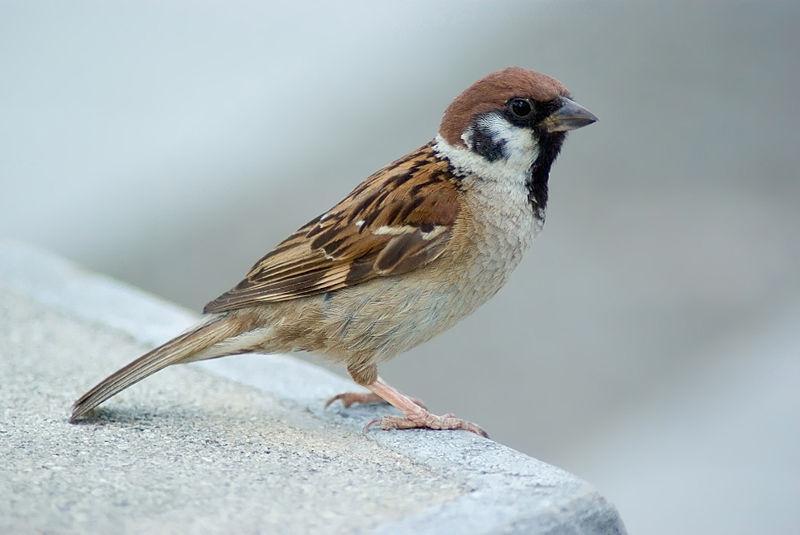
Maya is the Filipino common name for the Eurasian tree sparrow, Passer montanus. This widely distributed Passeriformes species is just introduced to the country, but has adapted very well to its conditions. It is now arguably the most familiar bird in urban areas in the Philippines. As a result it is confused by most locals with maya pula, or the Black-headed Munia (Lonchura atricapilla), as the former national bird of the Philippines.
Species Profile
The Tree Sparrow's length is 12.5 to 14 cm. Its plumage is basically brown, black and white, with the adult's crown and nape colored chestnut, while the chin and throat are black. On the white cheeks are ear-coverts there is a triangular black patch, while two distinct narrow white bars cross the brown wings. The legs are pale brown and the irides hazel. Both male and female species look practically alike.
The young closely resemble their parents, but just appear to be duller. Also, their face pattern appear to be less distinct. The breast and belly are also browner than in the adult.
The Tree Sparrow's voice sounds more shrill compared to the House Sparrow. Their bird call is a shorter chip, and the song, consisting of modulated chirps, is more musical.
Habitat and Distribution
The bird is naturally a rural species in Europe, its place of origin. However it is a popular urban bird in parts of Asia, particularly in the Philippines, where it is commonly found perched along electric wires. Its nesting habits seem to be unscrupulous, and colonies will settle in tree hollows, disused quarries, and even human structures. Their nests are composed of hay, grass, wool, or other material, then lined with feathers. The bird lays four to six eggs.
The Tree Sparrow has a large global population, with an estimated 52,000,000-96,000,000 individuals in Europe alone. The total size has not yet been quantified. For this reason the IUCN has evaluated the bird's conservation status as of Least Concern.










